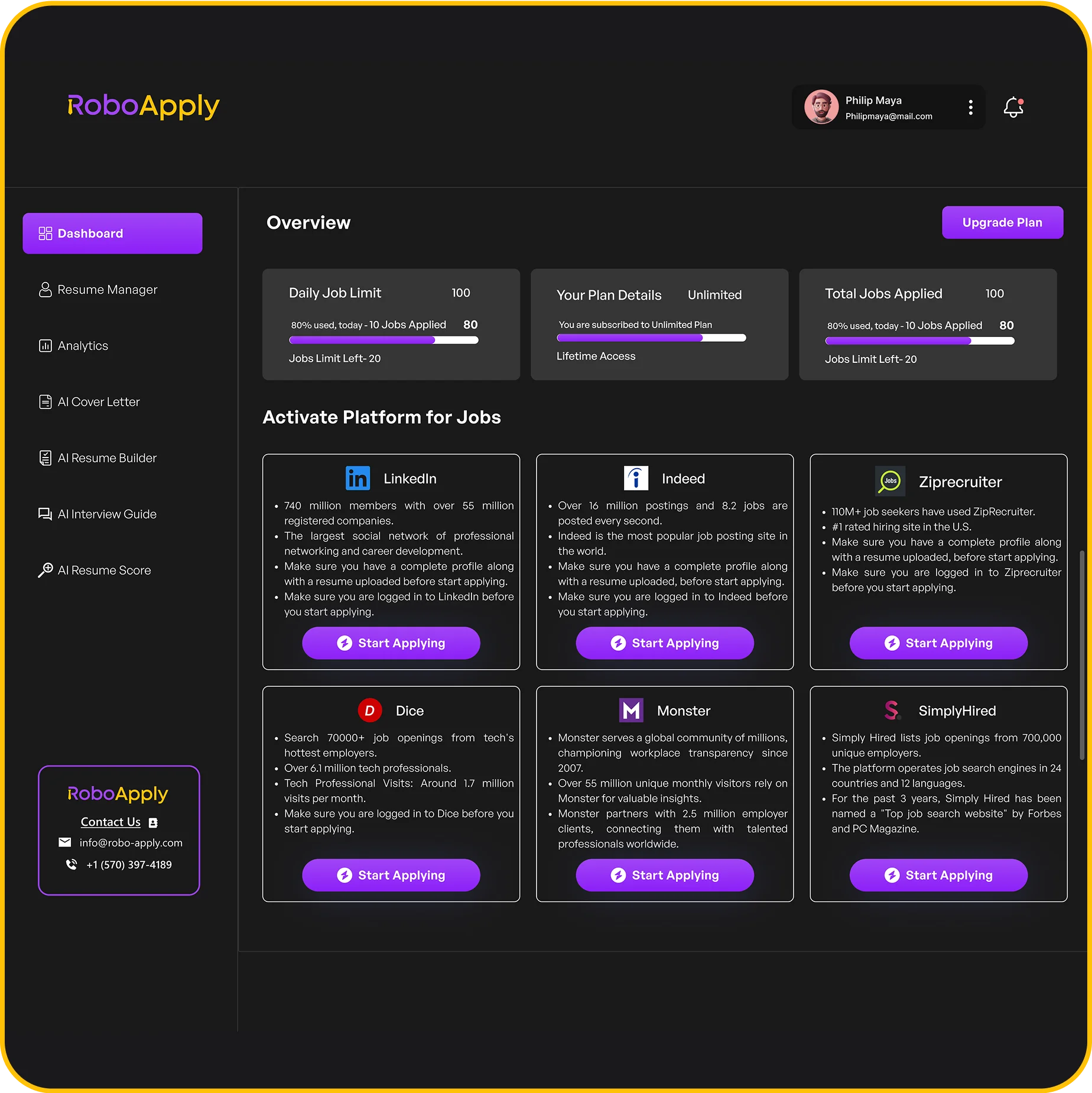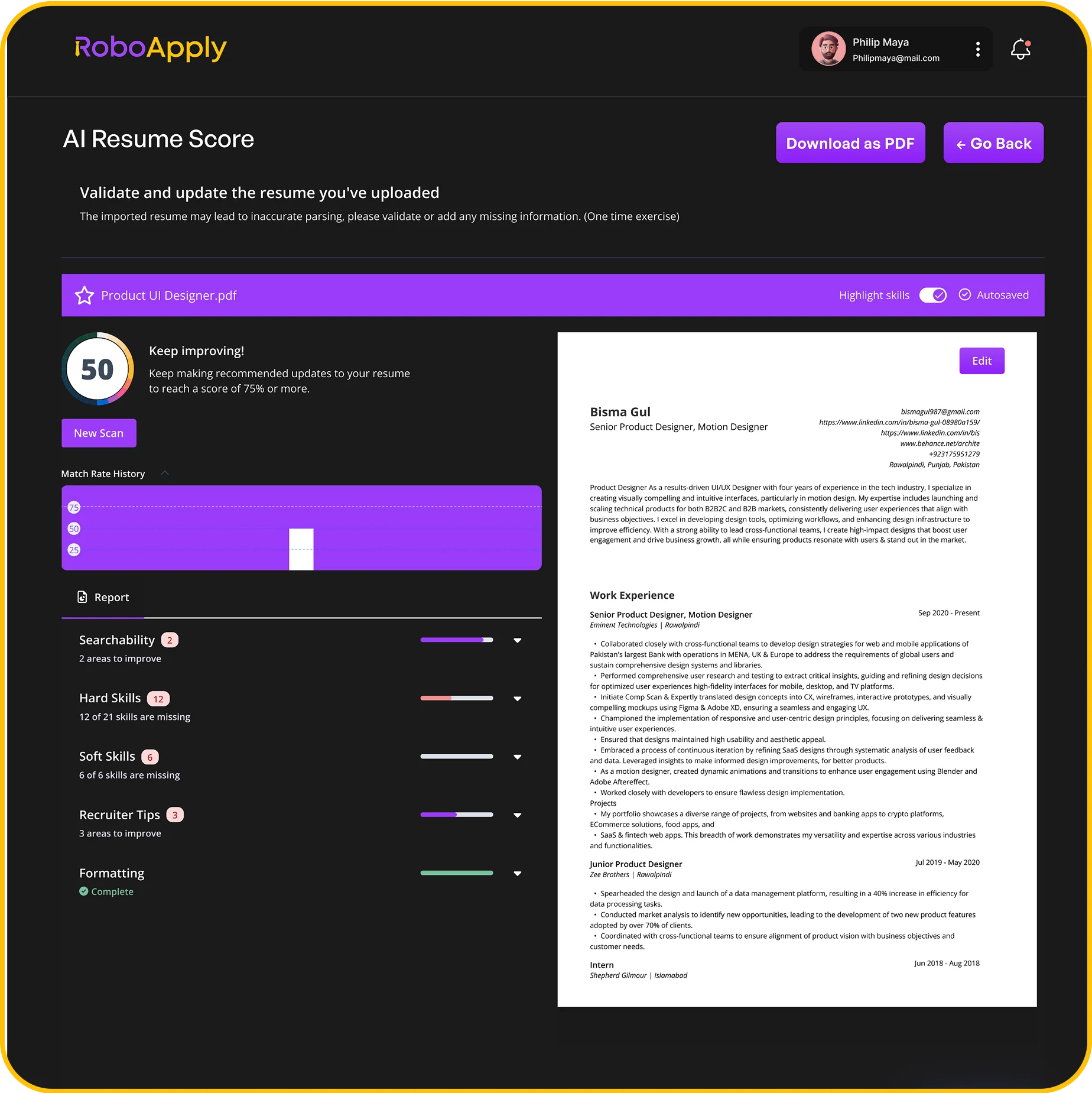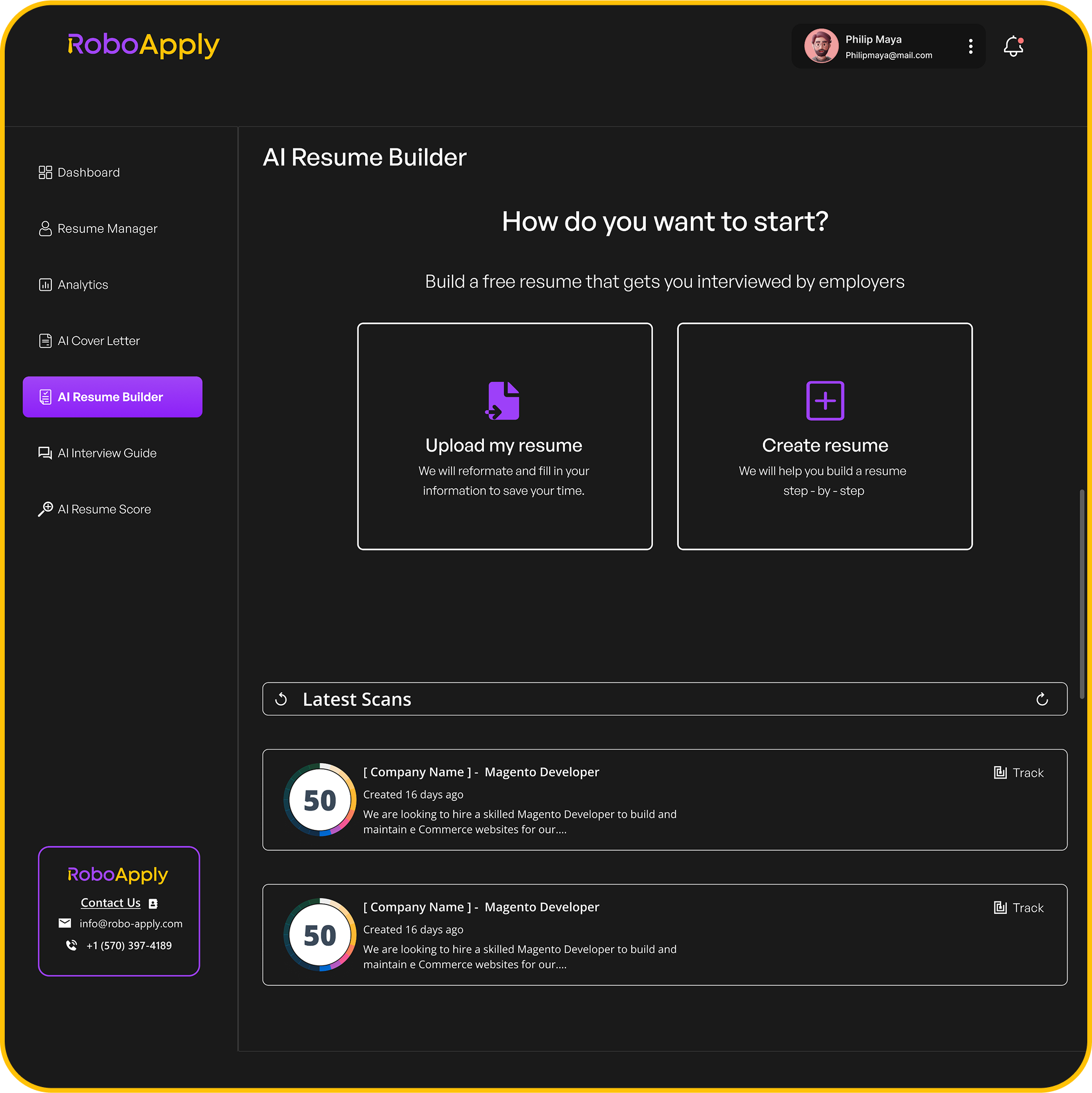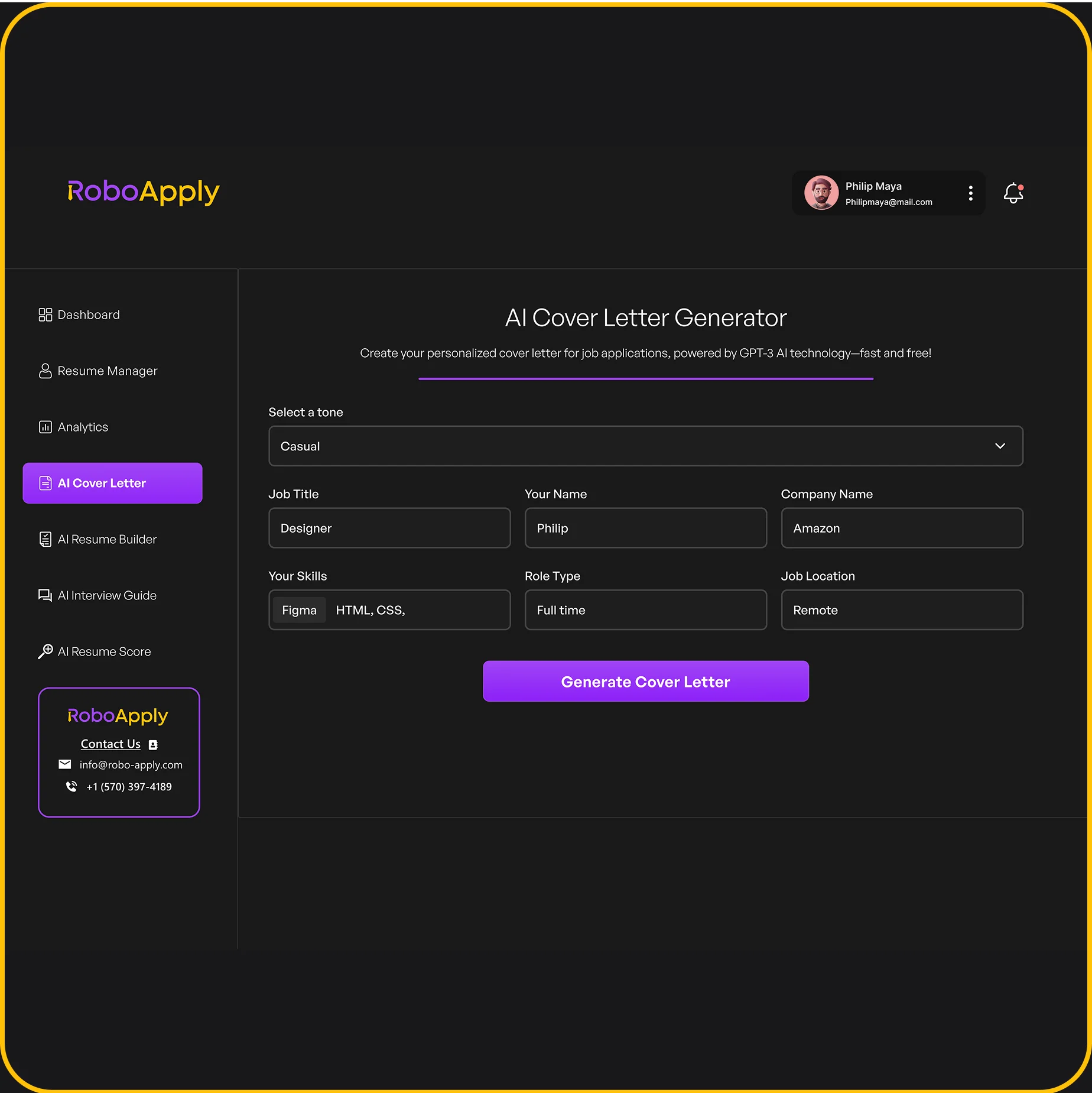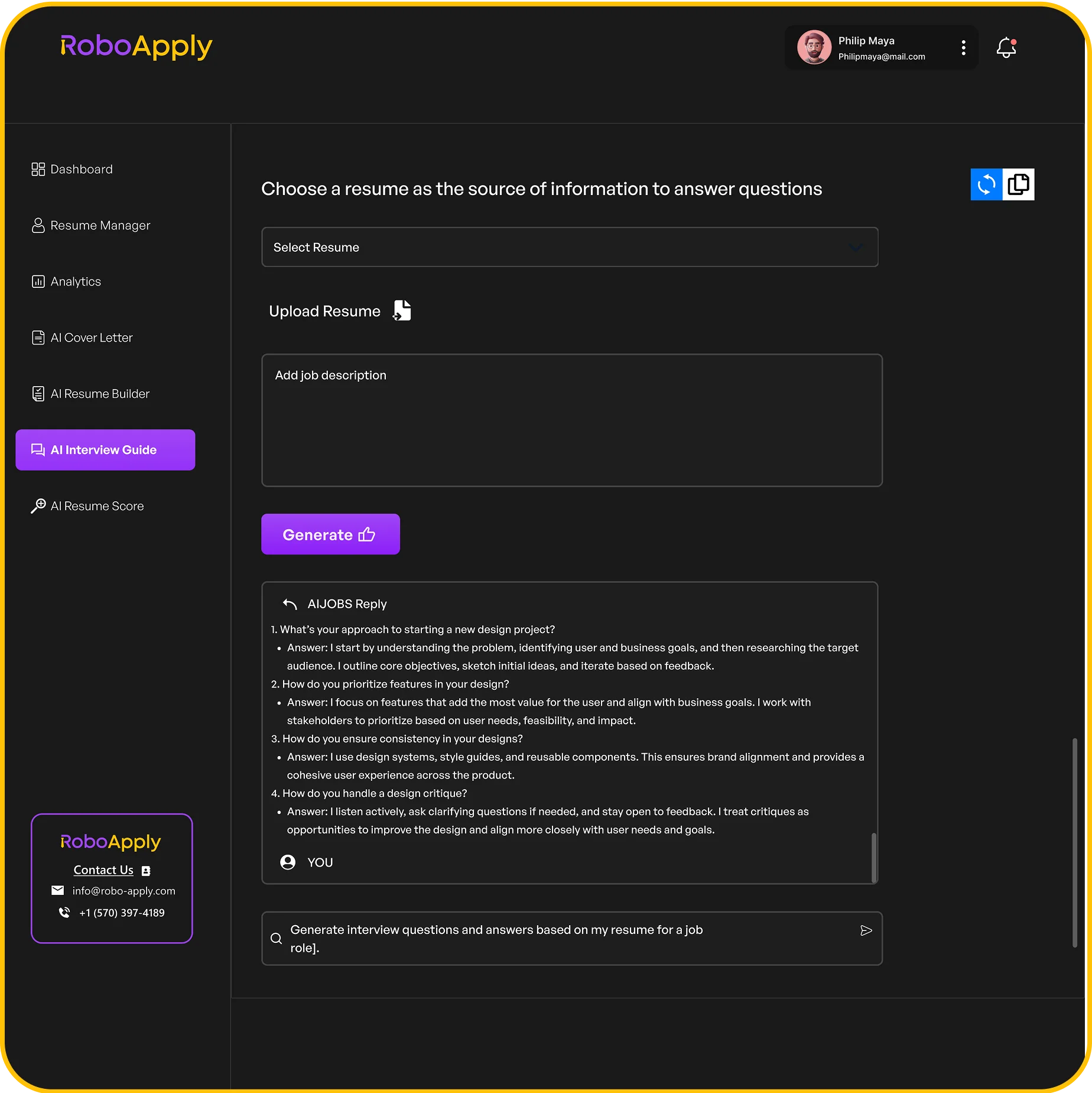So, you want to land that dream job as a yoga instructor, right? Getting your resume just right can feel like a tough pose, but it doesn’t have to be. Your Yoga Instructor Resume is your first chance to make a good impression, showing off your skills and experience. We’ve put together some solid examples and tips to help you create a resume that gets noticed in 2025.
Key Takeaways
- Make your contact information easy to find.
- Write a short, clear summary of your experience.
- List your work history with strong action words.
- Show off your certifications and training.
- Highlight your unique skills that make you stand out.
1. Contact Information

Your contact information is super important. It’s how employers will reach out to you, so make sure it’s accurate and professional. I’ve seen so many resumes with typos in the email address or wrong phone numbers – don’t let that be you! Double-check everything before you send it out.
Here’s what you should include:
- Full Name: Use a professional-sounding name. Nicknames are a no-go.
- Phone Number: Make sure it’s a number you actually answer or check regularly.
- Email Address: Use a professional email address. Something like "YogaLover2025@email.com" isn’t going to cut it. Create a new one if you have to.
- LinkedIn Profile: If you have one, include it. It’s a great way for employers to see your experience and connections. Make sure your LinkedIn profile is up-to-date!
- Location: City and state are fine. You don’t need to include your full street address.
I once helped a friend who was applying for a yoga instructor position. She had a really outdated email address from high school. We created a new one for her, and she immediately started getting more responses. It really does make a difference!
It’s also a good idea to keep this section clean and easy to read. Don’t use fancy fonts or colors that make it hard to find the information. RoboApply can help ensure your contact information is clear and correctly formatted, increasing your chances of getting noticed. For CNAs, ensuring clear contact information is accurate is equally important.
For those seeking remote work, remember to present a professional image. Avoid including unprofessional details in your contact section. This includes using a professional email, phone number, and LinkedIn profile. This is especially important when creating work-from-home resume.
2. Resume Summary
Your resume summary is like the opening scene of a movie – it needs to grab the viewer’s (or recruiter’s) attention right away. It’s a short paragraph at the top of your resume that highlights your key skills, experience, and what you bring to the table. Think of it as your elevator pitch in written form. A well-crafted summary can make a huge difference, especially in today’s competitive job market. RoboApply can help you optimize this section to ensure it aligns with the job description.
It’s your chance to make a strong first impression and show why you’re the perfect fit for the yoga instructor position. Don’t just list your qualifications; tell a story about your passion for yoga and your commitment to helping others achieve their wellness goals.
Here’s what makes a good resume summary:
- Highlight Key Skills: Mention your most relevant skills, such as different yoga styles you teach, your knowledge of anatomy, and your ability to create inclusive and engaging classes.
- Quantify Achievements: Whenever possible, use numbers to show the impact you’ve made in previous roles. For example, "Increased class attendance by 30% in six months" or "Trained over 500 students in various yoga techniques."
- Tailor to the Job: Customize your summary for each job you apply for. Read the job description carefully and highlight the skills and experience that match the employer’s needs. RoboApply can assist in tailoring your summary to match specific job requirements.
A strong resume summary is concise, compelling, and tailored to the specific job you’re applying for. It should immediately demonstrate your value to the employer and entice them to read further. It’s not just about what you’ve done, but what you can do for them.
Here’s an example of a strong resume summary:
"Enthusiastic and certified Yoga Instructor with 5+ years of experience leading diverse groups in Vinyasa, Hatha, and Restorative yoga. Proven ability to create personalized yoga programs to meet individual client needs and fitness goals. Passionate about promoting wellness and mindfulness through yoga. Increased client retention by 25% through engaging and supportive teaching methods."
Another example:
"Dedicated and experienced Yoga Instructor with a passion for helping students achieve their physical and mental well-being. Certified in Ashtanga and Bikram yoga, with a strong understanding of anatomy and physiology. Skilled in creating a safe and inclusive environment for students of all levels. Improved student flexibility and strength by an average of 20% through targeted exercises and personalized instruction."
3. Work Experience
Your work experience section is where you show potential employers what you’ve actually done. It’s not just about listing your job titles; it’s about highlighting your accomplishments and responsibilities in a way that demonstrates your skills and suitability for the yoga instructor position. RoboApply can help you tailor this section to match the specific requirements of each job you apply for, increasing your chances of getting noticed. Let’s get into it.
Example Work Experience Entries
Here are a few examples of how to format your work experience entries:
- Yoga Instructor, ZenLife Studio, New York, NY (2020 – Present)
- Substitute Yoga Teacher, Community Wellness Center, Anytown, USA (2018 – 2020)
- Yoga Teacher Assistant, Serenity Yoga School, Somecity, CA (2017 – 2018)
Quantify Your Accomplishments
Whenever possible, use numbers to show the impact you made in your previous roles. For example:
- "Increased class attendance by 20%" is much more impactful than "Increased class attendance."
- "Managed a class size of up to 30 students" gives a clear picture of your experience.
- "Developed and led 5 new workshops" shows your initiative and creativity.
Tailor to the Job Description
Carefully read the job description and identify the key skills and qualifications the employer is looking for. Then, make sure to highlight those skills and qualifications in your work experience section. For example, if the job description mentions experience with prenatal yoga, be sure to include any experience you have in that area. You can use resume examples for 2025 to get an idea of what to include.
Use Action Verbs
Start each bullet point with a strong action verb to make your accomplishments stand out. Here are a few examples:
- Led
- Developed
- Implemented
- Taught
- Managed
- Created
- Facilitated
- Guided
Remember to keep your work experience section concise and easy to read. Use bullet points to break up the text and make it scannable. Focus on your most relevant and impressive accomplishments, and tailor your entries to match the specific requirements of each job you apply for. This is where you show them you’re the right fit!
RoboApply and Work Experience
RoboApply can be a huge help in crafting your work experience section. It allows you to store multiple versions of your work experience entries, each tailored to different types of yoga instructor positions. You can then quickly select the most relevant entries for each job application, saving you time and ensuring that your resume is always targeted and effective. It’s like having a personal assistant for your job search! Make sure to use a yoga teacher resume template to help you get started.
4. Certifications
Having the right certifications can really set you apart. It shows you’ve put in the work and have the knowledge to back it up. Plus, many studios and gyms require specific certifications for their instructors. RoboApply can help you tailor your resume to highlight the certifications that match each job description.
Listing your certifications clearly demonstrates your qualifications and commitment to the practice.
Here’s how you might format this section:
- Registered Yoga Teacher (RYT) 200-hour – Yoga Alliance
- RYT 500-hour – Santosha Yoga
- Certified Pilates Instructor – Body Arts and Science International (BASI)
- CPR/AED Certification – American Red Cross
- First Aid Certification – American Heart Association
Make sure to include the name of the certifying organization and the date you received the certification. If your certification is expiring soon, note that you are in the process of renewing it.
It’s also a good idea to list any specialized certifications you have, such as prenatal yoga, kids yoga, or yoga for athletes. These can make you a more attractive candidate for certain positions. Remember to tailor your teacher resume examples to the specific requirements of the job you’re applying for. For example, if a studio is looking for someone with experience teaching restorative yoga, be sure to highlight any restorative yoga certifications you have. This is especially important for math teachers too, so make sure to highlight any math teacher resume certifications you have.
5. Skills
Your skills section is where you show off what you’re good at. Make sure to tailor this section to each job you apply for, highlighting the skills that are most relevant to the specific position. RoboApply can help you quickly adjust your resume for different job applications, ensuring you always present the most relevant skills.
Here’s what you should keep in mind:
- Hard skills are teachable abilities or skill sets that are easy to quantify. For example, knowledge of different yoga styles or CPR certification.
- Soft skills are personal attributes that enable someone to interact effectively and harmoniously with other people. For example, communication, empathy, and patience.
- Always include a mix of both hard and soft skills to present a well-rounded picture of your abilities.
Here are some skills you might include on your yoga instructor resume:
- Yoga Instruction: Proficient in teaching various yoga styles (Hatha, Vinyasa, Restorative, etc.).
- Program Design: Ability to create and implement effective yoga programs for different levels and needs.
- Student Engagement: Skilled in motivating and engaging students in a positive and supportive environment. Highlighting key skills like yoga instruction, program design, and student engagement is crucial for a yoga instructor’s resume.
- Communication: Excellent verbal and non-verbal communication skills to effectively guide students.
- Anatomy Knowledge: Solid understanding of human anatomy and physiology to ensure safe practice.
- Adjustments: Skilled in providing hands-on adjustments to students while maintaining safety.
- Class Management: Ability to manage and organize classes effectively.
- CPR/First Aid: Certified in CPR and First Aid.
- Meditation Guidance: Experience in leading meditation sessions.
- Flexibility: Adaptable to different teaching environments and student needs.
- Empathy: Ability to connect with students and understand their individual challenges.
- Patience: Demonstrates patience and understanding when working with students of all levels.
Remember to quantify your skills whenever possible. For example, instead of saying "Experienced in yoga instruction," you could say "Experienced in teaching over 500 hours of yoga classes to diverse groups."
Consider using a skills matrix to showcase your abilities. Here’s an example:
| Skill | Proficiency | Experience |
|---|---|---|
| Hatha Yoga | Expert | 5+ years of teaching experience, certified instructor |
| Vinyasa Yoga | Advanced | 3+ years of teaching experience, completed advanced training |
| Restorative Yoga | Intermediate | 1+ years of teaching experience, certified in restorative yoga |
| Meditation | Advanced | 4+ years of leading guided meditation sessions |
| CPR/First Aid | Certified | Current certification, experience in handling minor injuries in class |
This guide offers over 300 essential resume skills for 2025, emphasizing those in high demand like problem-solving, communication, leadership, and technical expertise. It provides examples and tips for optimizing resumes to match current job listings, aiming to help job seekers stand out and secure more interviews. The resource also covers using technology and templates for improved applications and auto-applying to jobs.
This guide offers 20 hair stylist resume examples and expert advice for 2025. It provides step-by-step instructions, templates, and tips to help job seekers create a strong resume that highlights their skills, specialties, and client experience. The resource aims to help individuals confidently build or optimize their resumes for salon jobs, increasing their chances of landing interviews in the competitive beauty industry.
6. Education
Your education section is where you list your academic background. It’s pretty straightforward, but there are a few things to keep in mind to make it shine. RoboApply can help you tailor this section to match the job description, ensuring that the most relevant educational experiences are highlighted.
Example Entry
Here’s how a typical education entry might look:
- Degree: Bachelor of Science in Kinesiology
- University: University of California, Los Angeles
- Graduation Date: June 2020
- Relevant Coursework: Anatomy, Physiology, Biomechanics, Exercise Psychology
Tips for Listing Education
- List in Reverse Chronological Order: Start with your most recent degree and work backward. This is standard practice for resumes.
- Include Relevant Coursework: If you have coursework that directly relates to yoga instruction, definitely include it. This shows you have a solid foundation in the underlying principles.
- Mention Honors or Awards: Did you graduate with honors or receive any academic awards? Add them! It shows you excelled in your studies. If you’re looking for system analyst resume examples, remember to tailor your education section to highlight relevant skills and coursework.
- Don’t Include High School (Usually): Once you have a college degree, it’s generally not necessary to include your high school information. Save the space for more relevant details.
If you have a degree in a field unrelated to yoga, don’t worry! You can still highlight how the skills you gained during your studies are transferable to yoga instruction. For example, a degree in psychology could demonstrate your understanding of human behavior and motivation, which is valuable in teaching.
What if You Don’t Have a Degree?
Not everyone has a four-year degree, and that’s okay. If you have an associate’s degree or some college coursework, you can still include it. Just be sure to highlight any relevant skills or knowledge you gained. If you’re a physical education teacher, make sure to highlight your teaching certifications in your resume.
- Associate of Arts in General Studies
- Santa Monica College
- Completed: May 2018
- Relevant Coursework: Introduction to Psychology, Human Anatomy
Continuing Education
Don’t forget to include any continuing education courses or workshops you’ve completed. These show that you’re committed to ongoing learning and professional development. If you’re a nursing student, remember to showcase your clinical experience and relevant coursework in your resume.
- Example:
- Yoga Anatomy Intensive
- Yoga Alliance
- Completed: July 2022
7. Awards and Recognition
Listing awards and recognition can really make your yoga instructor resume shine. It shows you’re not just doing the job, but you’re excelling at it. Think of it as adding extra proof to your claims of being a great instructor. RoboApply can help you format this section to really grab attention.
Example Entries
Here are a few examples of how you might list awards and recognition:
- "Yoga Instructor of the Year" – Blissful Balance Studio, 2024. Recognized for outstanding student feedback and class participation rates.
- "Community Wellness Award" – City of Harmony, 2023. Acknowledged for leading free yoga sessions in local parks, promoting community health.
- "Top-Rated Instructor" – Zenith Yoga App, 2022. Awarded based on user ratings and positive reviews on the platform.
Tips for Listing Awards
- Be Specific: Don’t just say "Award Winner." Name the award, the organization that gave it, and the year you received it.
- Highlight Achievements: Briefly explain why you received the award. What did you do to earn it? Did you increase class attendance, improve student satisfaction, or contribute to the community?
- Keep it Relevant: Focus on awards that directly relate to your yoga instruction skills and experience. A baking contest win might be impressive, but it’s probably not relevant here.
Think of this section as a way to quantify your impact. Awards and recognition provide concrete evidence of your skills and dedication. They show potential employers that you’re not just good at what you do, but you’ve also been recognized for it by others. Make sure to tailor this section to each application, highlighting the awards that are most relevant to the specific job requirements. RoboApply can help you tailor your yoga instructor resume to each job.
Table Example
If you have multiple awards, consider using a table to present them clearly:
| Award Name | Organization | Year | Description |
|---|---|---|---|
| Yoga Instructor of the Year | Blissful Balance Studio | 2024 | Recognized for outstanding student feedback and class participation rates. |
| Community Wellness Award | City of Harmony | 2023 | Acknowledged for leading free yoga sessions in local parks, promoting community health. |
| Top-Rated Instructor | Zenith Yoga App | 2022 | Awarded based on user ratings and positive reviews on the platform. |
| Mind-Body Connection Champion | Serenity Yoga Center | 2021 | Honored for creating inclusive and accessible yoga programs for individuals with disabilities, fostering a supportive and healing environment. |
8. Volunteer Experience
Volunteering can really show you’re dedicated and passionate about yoga, plus it fills gaps if you’re just starting out. It’s a great way to get experience and network. RoboApply can help you tailor your resume to highlight this experience effectively.
Here’s how to make it shine:
- Be specific about your role and responsibilities. Don’t just say you volunteered; explain what you did.
- Quantify your impact whenever possible. Did you help increase class attendance? Did you assist in a program that improved participants’ well-being? Use numbers to show your contributions.
- Tailor your volunteer experience to match the job you’re applying for. Highlight the skills and experiences that are most relevant to the position.
Volunteer work demonstrates your commitment to the yoga community and your willingness to give back. It also shows you’re proactive and have a strong work ethic.
Here’s an example:
Yoga Instructor Volunteer Experience
Yoga Instructor | Community Wellness Center | 2022 – Present
- Led weekly beginner yoga classes for underserved community members, increasing participation by 30% over two years.
- Adapted yoga practices to accommodate individuals with physical limitations, improving accessibility and inclusivity.
- Collaborated with center staff to develop and implement a new yoga program for seniors, resulting in positive feedback and increased engagement.
Assistant Yoga Instructor | Local Charity | 2021
- Assisted lead instructor in large group yoga sessions, providing hands-on adjustments and modifications to participants.
- Helped set up and clean the yoga space, ensuring a safe and welcoming environment for all attendees.
- Supported fundraising efforts for the charity by promoting yoga classes and events, contributing to a 15% increase in donations.
Consider adding these to your resume:
- Yoga events at local schools
- Yoga for charity events
- Yoga at senior centers
Don’t forget to mention any specific skills you used or developed during your volunteer work. Did you improve your communication skills? Did you learn how to adapt yoga practices for different populations? Make sure to highlight these achievements. You can also highlight projects such as volunteer work at community centers.
9. Publications
Some yoga instructors also write! If you’ve published articles, books, or contributed to other publications, this is the place to showcase that. It shows you’re not just practicing yoga, but also thinking deeply about it and sharing your knowledge. RoboApply can help you tailor this section to match the specific focus of the yoga studio or organization you’re applying to.
Example Entry
Yoga for Beginners: A Step-by-Step Guide. Self-Published, 2023. Available on Amazon.
Why It Matters
Publications demonstrate your expertise and commitment to the field. It’s a great way to stand out, especially if the publication is relevant to the job you’re seeking. It shows you’re more than just an instructor; you’re a thought leader.
How to List Publications
- Title and Publication Venue: List the title of your work and where it was published (e.g., journal, website, book).
- Date: Include the publication date.
- Brief Description: Add a short sentence describing the content or focus of the publication. This is especially helpful if the title isn’t self-explanatory.
If you have multiple publications, consider categorizing them (e.g., books, articles, blog posts) for better organization. This makes it easier for the reader to quickly grasp the scope of your work.
Tailoring with RoboApply
Use RoboApply to identify keywords from the job description and incorporate them into your publication descriptions. For example, if the job emphasizes restorative yoga, highlight any publications you have on that topic. This helps demonstrate your specific expertise and increases your chances of getting noticed. You can also use RoboApply to ensure your yoga teacher resume is optimized for applicant tracking systems.
10. Workshops and Retreats
Listing workshops and retreats you’ve led or attended shows commitment to ongoing learning and teaching. It’s a great way to highlight specialized skills and experience beyond basic certifications. RoboApply can help you tailor this section to match specific job requirements.
Example Entry
- Yoga for Athletes Workshop, Lead Instructor, Balance Studio, June 2024
- Mindfulness and Movement Retreat, Participant, Serenity Center, October 2023
- Advanced Vinyasa Training, Assistant Teacher, Flow Yoga School, March 2023
Why It Matters
This section demonstrates your dedication to the yoga community and your willingness to expand your knowledge. It also shows potential employers that you’re not just certified, but actively involved in continuing education and sharing your expertise.
How to List Them
- Start with the most recent events. This keeps your resume current and relevant.
- Include the name of the workshop or retreat, your role (e.g., lead instructor, assistant, participant), the organization or studio, and the date.
- Briefly describe your responsibilities or what you learned, especially if it’s relevant to the job you’re applying for.
Consider adding a brief description of the workshop or retreat if the name isn’t self-explanatory. This provides context and shows the depth of your experience.
Making it Stand Out
- Focus on workshops and retreats that align with the type of yoga you want to teach. If you’re applying for a job at a studio that specializes in restorative yoga, highlight any related workshops.
- Quantify your impact whenever possible. For example, "Led a workshop for 20 athletes, improving their flexibility and reducing injury risk."
- Use action verbs to describe your role, such as "facilitated," "guided," or "presented."
11. Testimonials
Testimonials can really make your resume stand out. They show, instead of tell, how awesome you are. Think of them as mini-recommendations that highlight your skills and impact. RoboApply can help you organize these into a compelling section.
Including testimonials can significantly boost your credibility. It’s like having your students vouch for you right on your resume.
Why Include Testimonials?
- Social proof is powerful. People trust what others say about you more than what you say about yourself.
- They add a personal touch. A quote from a student can make your resume feel more human and less like a list of qualifications.
- Testimonials can highlight specific skills or qualities that you want to emphasize. For example, if you’re great at teaching beginners, a testimonial can showcase that. You can use a yoga teacher resume example to see how others have done it.
Gathering Testimonials
Getting testimonials doesn’t have to be hard. Here’s how:
- Ask current and former students. Send a quick email or ask after class. Most people are happy to help.
- Use online surveys. Tools like Google Forms make it easy to collect feedback.
- Check your social media. You might already have positive comments or reviews that you can use. If you are a yoga instructor, you may have some already!
Formatting Testimonials
Keep testimonials short and sweet. A few sentences are usually enough. Include the person’s name and, if relevant, their role (e.g., "Long-time student").
"Sarah is an amazing yoga teacher! She’s patient, knowledgeable, and creates a welcoming environment for all levels." – Emily K., Beginner Student
Where to Put Testimonials
If you have several strong testimonials, consider giving them their own section. Otherwise, you can include them in your "Skills" or "Work Experience" sections, where they support your claims. Make sure your yoga certifications are also clearly listed.
Testimonials are a great way to add some extra oomph to your resume. They show potential employers that you’re not just qualified on paper, but also a great teacher in practice.
12. Professional Affiliations
Professional affiliations can show employers that you’re serious about your yoga career and committed to staying current in the field. Listing these can really boost your resume, especially if the affiliations are well-known or respected. RoboApply can help you tailor this section to match the specific requirements of each job you apply for.
Examples of Professional Affiliations
Here are some examples of professional affiliations you might include:
- Yoga Alliance: This is probably the most common and recognized affiliation for yoga teachers. Being a member shows you’ve met certain standards for training and experience. You can find Yoga Alliance-certified schools to start your journey.
- International Association of Yoga Therapists (IAYT): If you specialize in yoga therapy, this affiliation is a great way to demonstrate your expertise and commitment to ethical practice.
- Local Yoga Associations: Many cities or regions have their own yoga associations. These can be great for networking and staying connected to the local yoga community.
How to List Affiliations
When listing your affiliations, include the following information:
- Name of the organization
- Your membership status (e.g., Registered Yoga Teacher, Member)
- Dates of membership (if applicable)
For example:
Yoga Alliance, Registered Yoga Teacher (RYT-200), 2020-Present
Why This Matters
Including professional affiliations on your resume shows employers that you’re invested in your professional development and committed to upholding certain standards in the yoga industry. It can also give you a competitive edge over other candidates who don’t have these affiliations.
Tips for Making It Shine
- Be selective: Only include affiliations that are relevant to the jobs you’re applying for.
- Highlight achievements: If you’ve held any leadership positions or received any awards from the organization, be sure to mention them.
- Keep it current: Make sure your affiliations are up-to-date. If you’re no longer a member of an organization, remove it from your resume.
By including a strong "Professional Affiliations" section, you can show potential employers that you’re a serious and dedicated yoga instructor. Remember to tailor this section using RoboApply to match the specific requirements of each job description.
13. Portfolio
Having a portfolio is a great way to show, not just tell, potential employers what you’re capable of. It’s especially useful in a field like yoga, where seeing you in action can be more convincing than reading about your skills. RoboApply can help you tailor your portfolio to match specific job requirements, making sure your best work is always front and center.
Video Demonstrations
Video is king! Record yourself teaching a class or demonstrating specific poses. This lets employers see your teaching style, your ability to guide students, and your own physical practice.
- Keep videos short and focused.
- Ensure good lighting and sound.
- Showcase a variety of yoga styles you teach.
Client Testimonials
Don’t just say you’re good—prove it with testimonials. Gather quotes from students who have benefited from your classes. Positive feedback can really boost your credibility. You can easily add these to your yoga instructor CV.
- Ask for specific examples of how you’ve helped them.
- Include photos of your students (with their permission, of course!).
- Display testimonials prominently on your website or online portfolio.
Sample Class Plans
Sharing sample class plans gives employers a peek into your teaching methodology. It shows how you structure a class, what poses you include, and how you cater to different levels of students. This is a great way to show your teaching expertise.
- Include plans for different levels (beginner, intermediate, advanced).
- Showcase different styles of yoga (Hatha, Vinyasa, Restorative).
- Explain your reasoning behind the sequence of poses.
A well-crafted portfolio can set you apart from other candidates. It’s a dynamic way to showcase your skills and experience, making a lasting impression on potential employers.
Before-and-After Photos
If you’ve worked with clients on specific goals (like weight loss, flexibility, or strength), before-and-after photos can be incredibly powerful. Just make sure you have their consent to use these photos, and that you’re respecting their privacy.
- Focus on visible improvements.
- Highlight the client’s journey and your role in their progress.
- Always obtain written consent before using any photos.
Workshop Materials
If you’ve led any workshops or retreats, include materials like handouts, presentations, or even photos from the event. This demonstrates your ability to create and lead engaging and informative sessions. You can even include a link to your English teacher resume examples to show your versatility.
- Showcase the topics covered and the activities involved.
- Include feedback from participants.
- Highlight any unique aspects of your workshops.
Want to see what we’ve been up to? Check out our portfolio to see how we help people land their dream jobs. You can see all the cool stuff we’ve built and how it makes a difference. Don’t wait, come see for yourself!
Conclusion
So, there you have it. Making a good resume for a yoga instructor job might seem like a lot, but it’s really about showing what you can do and how you fit in. Think about the examples we looked at and try to make your resume clear and easy to read. A good resume helps you get noticed, and that’s the first step to getting the job you want. Just keep it simple, focus on your skills, and you’ll be in good shape.
Frequently Asked Questions
How long should my yoga instructor resume be?
It’s a good idea to make your resume about one page long, especially if you’re just starting out. If you have lots of experience, two pages can be okay. Just make sure everything you include is important and helps you get the job.
What should I put at the top of my resume?
You should put your most important and impressive stuff at the top. This includes your contact info, a short summary of who you are, and your best work experiences. This way, hiring managers see the best parts of your resume right away.
Is a resume summary important for a yoga instructor?
Yes, it’s really helpful! A good summary tells the person reading your resume what you’re good at and what kind of yoga you teach. It’s like a quick introduction that makes them want to read more.
What certifications should I include?
Make sure to list your yoga teacher training, like your 200-hour or 500-hour certifications. Also, if you have special training in things like prenatal yoga or restorative yoga, definitely include those too.
What kind of skills are good to put on my resume?
Think about skills that are important for a yoga teacher. This includes things like knowing different yoga styles (Vinyasa, Hatha, etc.), being good at talking to people, leading classes, and even managing a studio if you have that experience.
How should I describe my work experience?
You can talk about your experience teaching in different places, like studios, gyms, or even online. Describe what you did in those roles, like how many students you taught or any special classes you led.
Should I customize my resume for each job application?
It’s a good idea to change your resume a little bit for each job you apply for. Read the job description carefully and make sure your resume shows how your skills and experience match what they’re looking for.
Should I include a link to my online portfolio or videos?
Yes, if you have a website or an online portfolio with videos of you teaching or pictures of your classes, you should definitely include a link. It helps potential employers see your teaching style in action.










